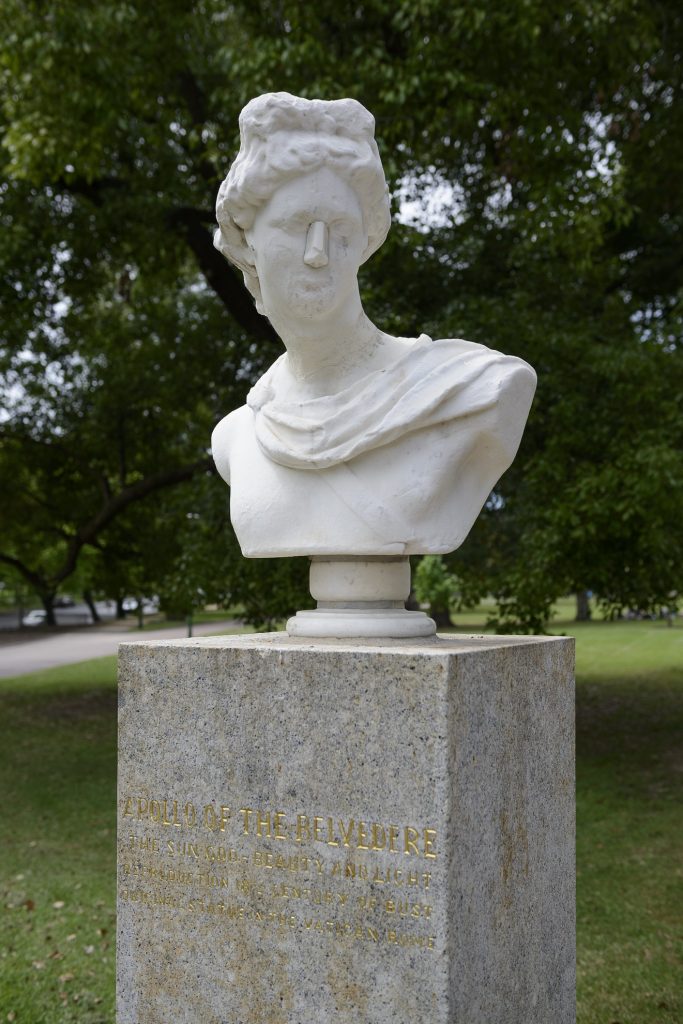Apollo Belvedere, Theordore Fink, Apollo Belvedere, Marble and granite bust, Queen Victoria Gardens
Summary
Location: Queen Victoria Gardens
This marble bust is a replica of the Apollo Belvedere found in Rome’s Vatican Museum. Known as the Greek god of the sun, Apollo would harness four horses to his chariot each day to drive the sun across the sky. In art, the youthful Apollo is traditionally seen as the epitome of beauty, but this god also has associations with music, prophecy and medicine.
Belvedere Apollo was donated to the city by well-known solicitor, politician, newspaper proprietor and educationist Theodore Fink. He acquired the bust and a replica of the Farnex Hercules for the people of Victoria when he was visiting Rome. The works were sited at the main entrance to Queen Victoria Gardens when they were unveiled in 1928; their location was slightly altered when Alexandra Avenue was lowered to pass beneath St Kilda Road. Fink’s donation marked the end of a tradition of placing copies of classical statuary in Melbourne’s public gardens, a practice that took hold in the 1860s and lasted into the early decades of the 20th century.
The two busts were unveiled on the 2 October 1928 at the main entry to the Queen Victoria Gardens. Fink hoped the busts would 'not only beautify our parks but elevate the taste of people and help them to appreciate fine things, stimulate the national love of beauty, that will express itself in the work of Australian sculptors and artists. 'This donation marked the end of a tradition of placing copies of classical statuary in Melbourne's public gardens. Since the 1860s the Fitzroy, Flagstaff and Carlton Gardens had been profusely ornamented with casts of sculptures from the National Gallery and elsewhere. But by Fink's time these had gone out of fashion and were allowed to deteriorate. Most were removed by the 1930s. The position of the busts was slightly altered when Alexandra Avenue was lowered to pass below St Kilda Road.

